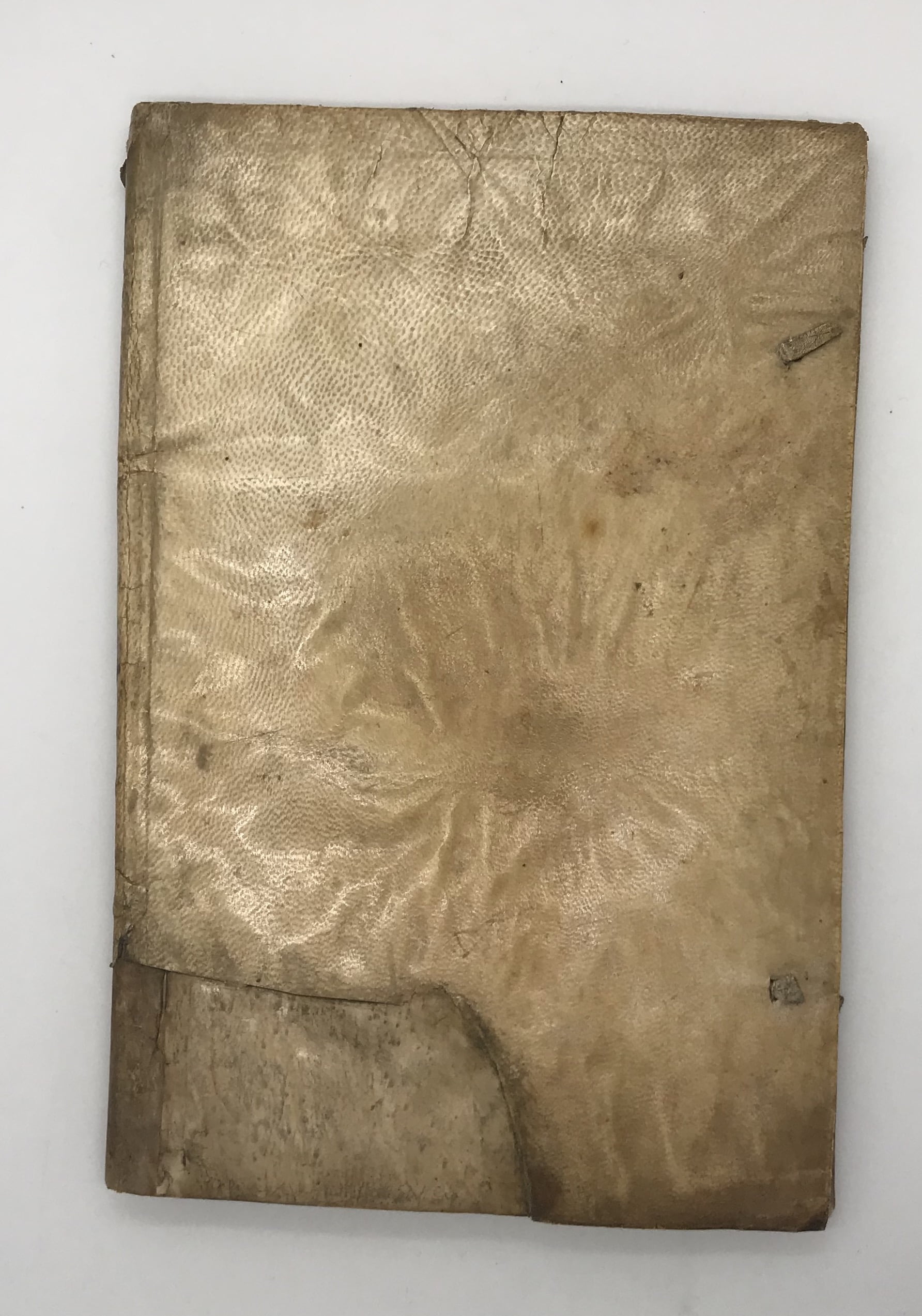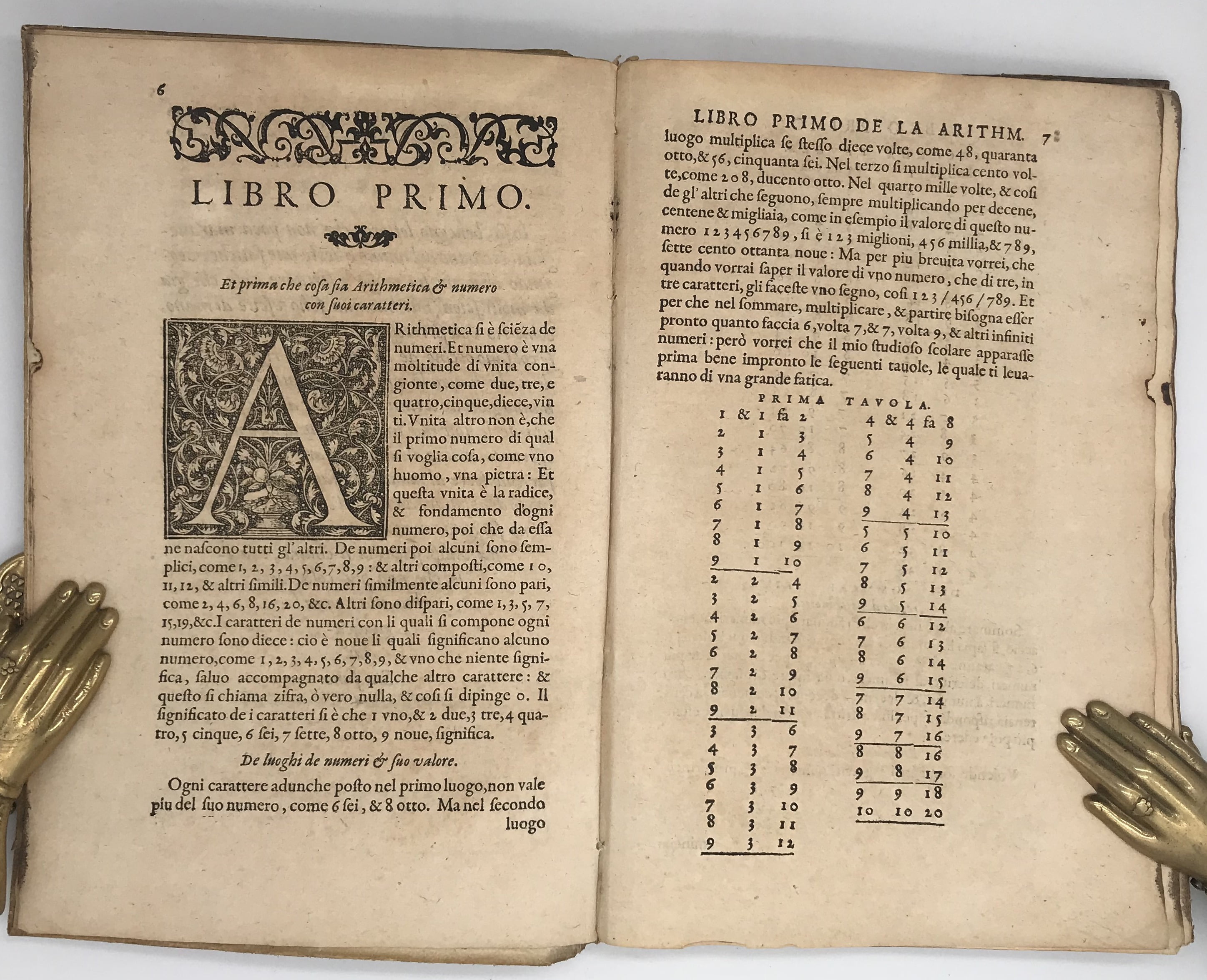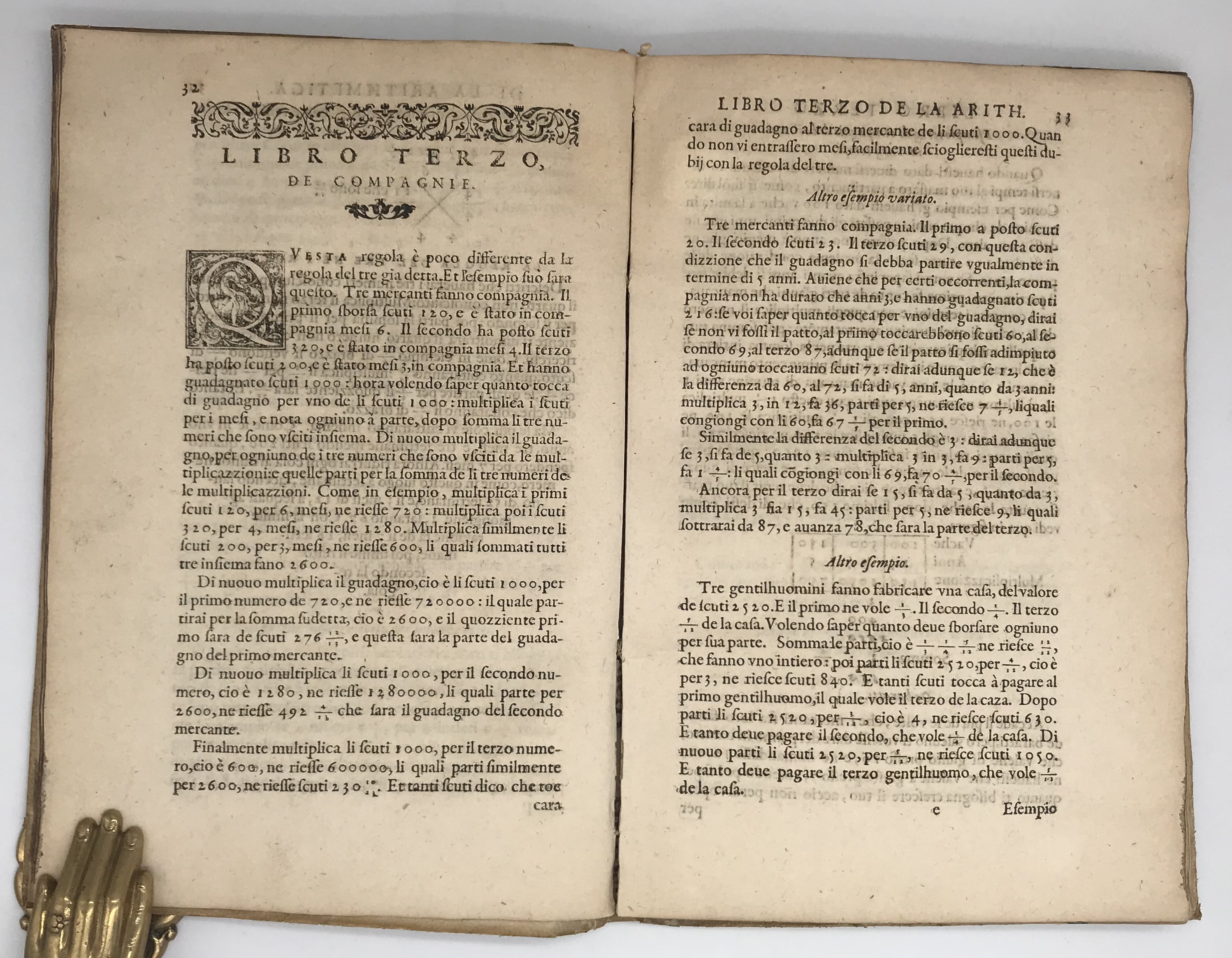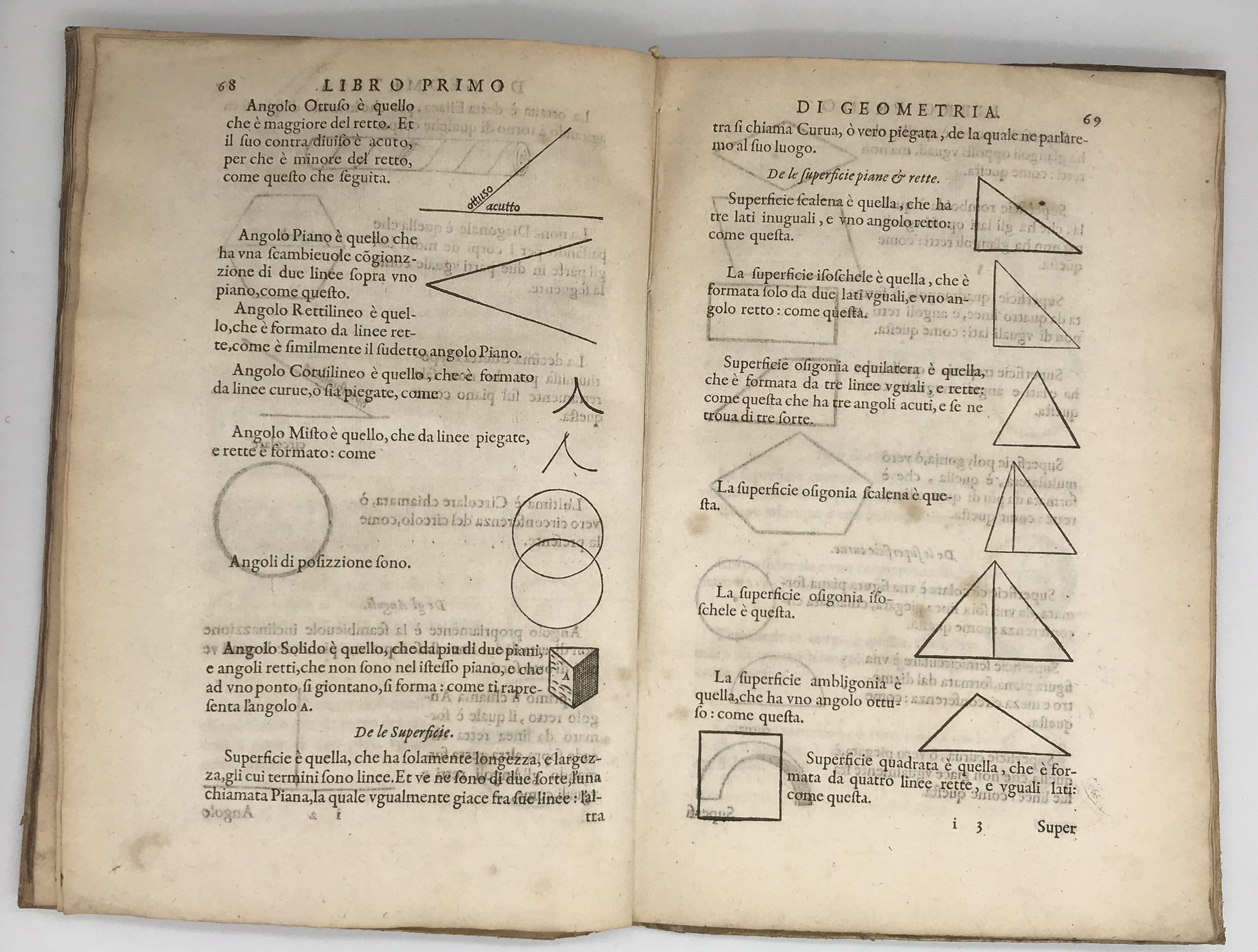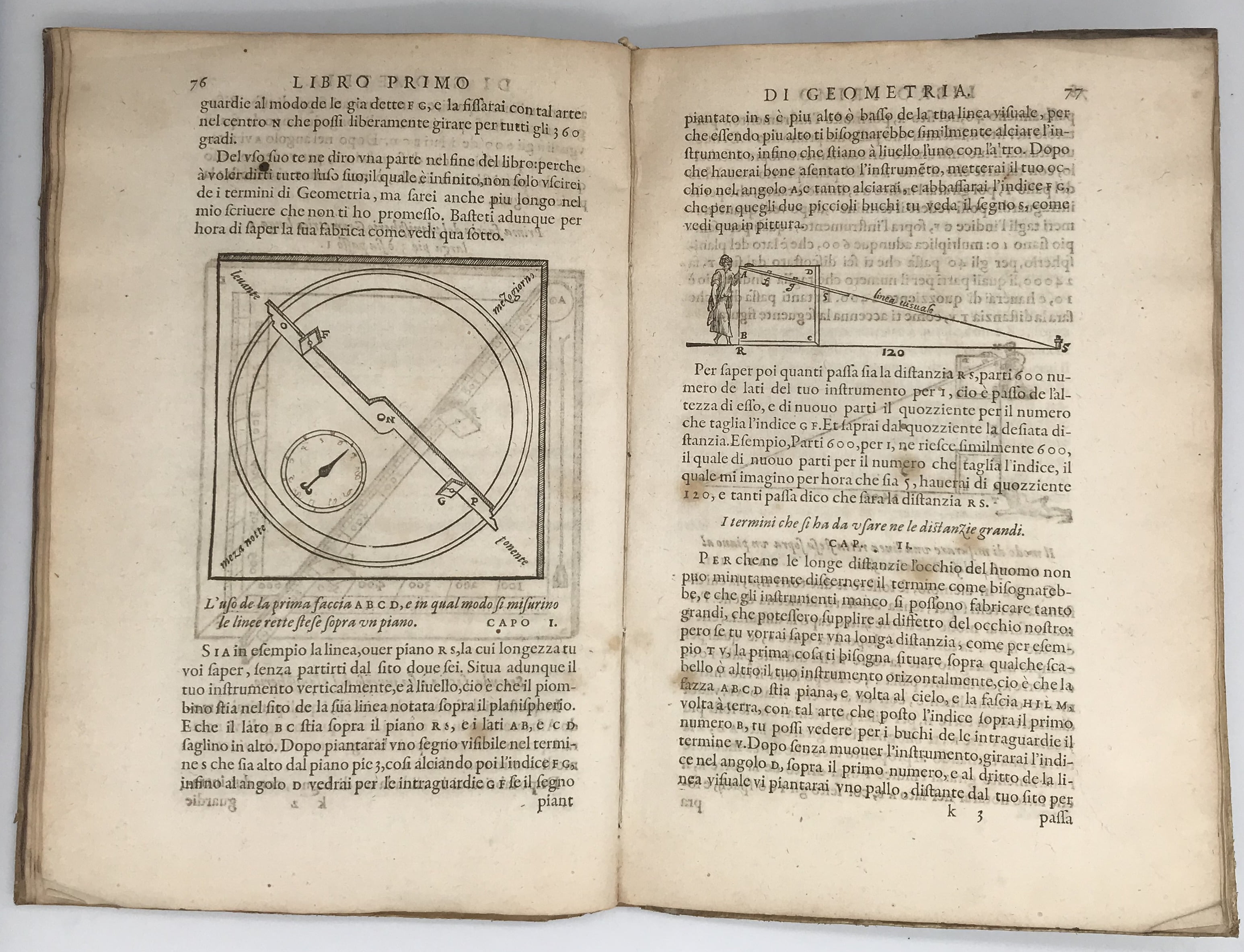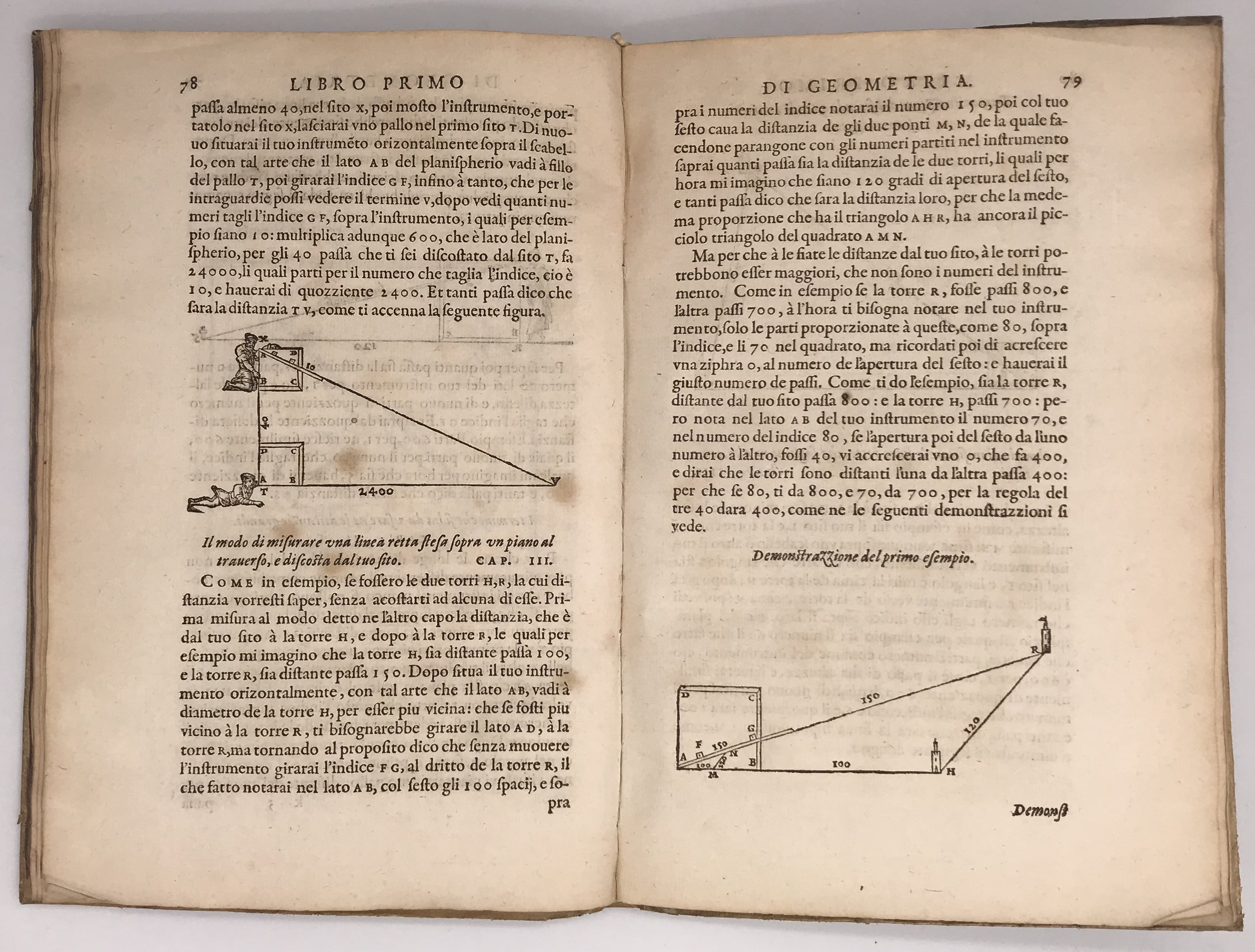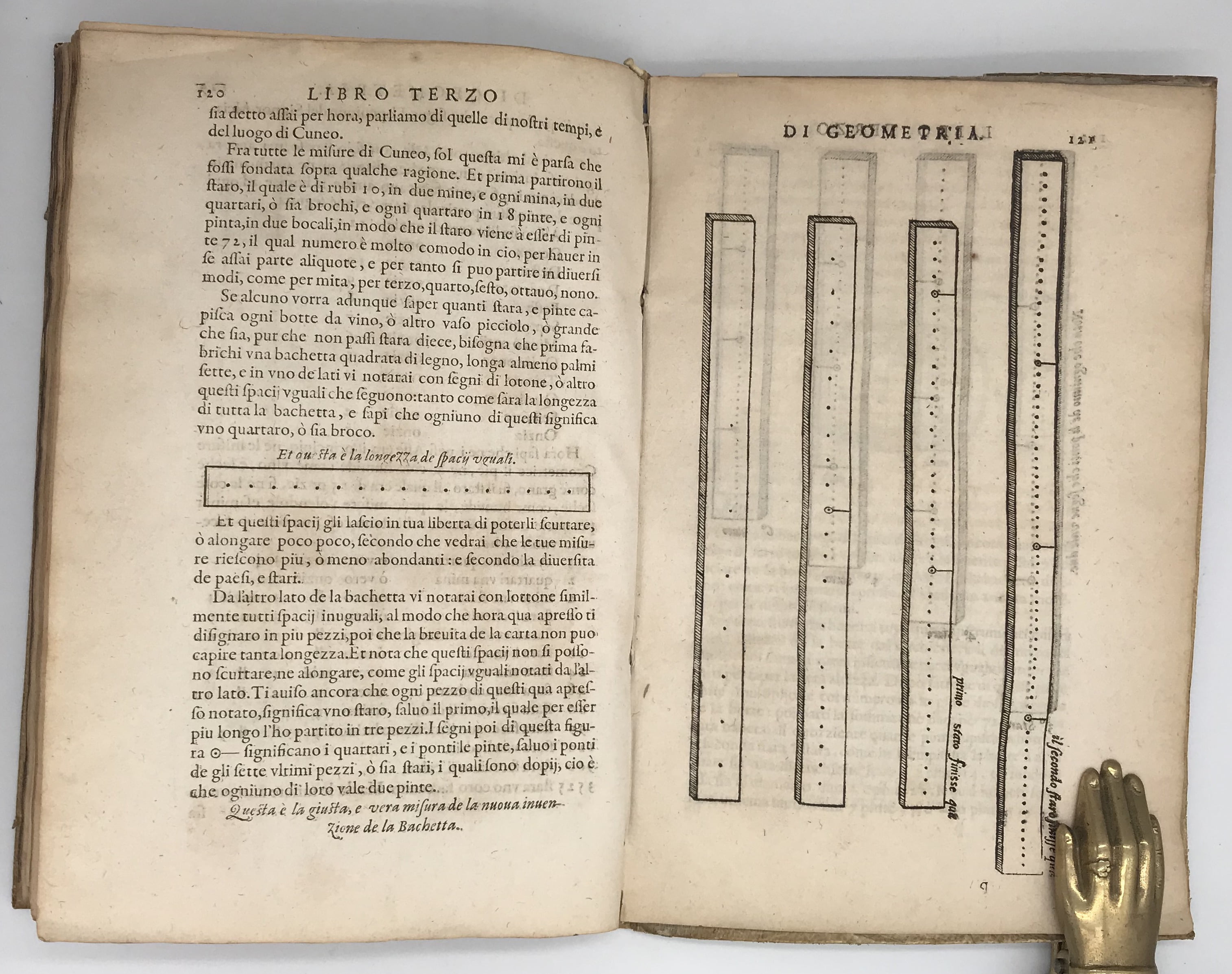PEVERONE, Giovan Francesco
SCARCE ARITHMETIC AND GEOMETRY
Arithmetica e geometria
Lyon, Jean II de Tournes, 1581£2,750.00
4to. Two parts in one, pp. 132 (ii). Roman letter, with Italic. Woodcut medallion with Peverone’s portrait to t-p, surrounded by typographical border with interlacing ribbons, leafy tendrils and grotesques; half title with identical medallion to part 2; woodcut illustrations of geometrical schemas and instruments; decorated initials, head- and tailpieces. Light age browning, a few scattered ink spots, small ink burn with minor loss to fol. 71 and to fore-edge of first gathering, very small oil stain to blank outer lower corner of four ll. A good copy in early vellum, traces of ties, partially recovered in vellum at a slightly later date. c1700 ms. Latin prayer to fep.
Scarce treatises on practical arithmetic and geometry, with important discussions of mathematical probability and geodetic triangulation. Born in Cuneo from a noble family, Giovan Francesco Peverone (1509-59) held numerous public offices including expert counsellor for the construction of hydraulic structures and fortifications. For his services to the city he was awarded the medal decorating the t-p of all editions of this work. ‘Arithmetica e geometria’ is a reprint of ‘Due breui e facili trattati, il primo d’arithmetica: l’altro di geometria’, first published by de Tournes in 1558. Whilst it reprised the structure and content of other such manuals produced on the Continent, it was the most influential which issued from the Piedmontese scholarly world—an unusual and original background surfacing in many mathematical demonstrations referring to operations with ‘fiorini di Piemonte’ or mathematical calculations of the area and physical shape of the Cuneo territory. The first part deals with practical arithmetic, i.e., basic operations, fractions (‘broken numbers’) and roots applied to everyday situations, such as games. Peverone was among the first to examine the question of mathematical probability concerning the subdivision of money during a game of cards. Had he reached the correct conclusion—one of the ‘great near misses of probability mathematics’—he would have anticipated the results of Fermat and Pascal by over a century (Kendall, ‘Studies in the History of Probability’, 1956). The second part is devoted to geometry and accompanied by handsome illustrations explaining how to measure towers, ditches and aqueducts. It is important for the description of contemporary instruments employed for measuring the land (e.g., the ‘planispherio geometrico’ of Peverone’s own invention) and the discussion of geodetic triangulation using Cuneo and other surrounding cities as reference points (Riccardi I/1, 266). A scarce, unusual and original fruit of Renaissance mathematical culture in the North-Italian provinces.
Brunet IV, 583; Riccardi I/1, 265-66, and I/2, 70; Smith/de Morgan 290. Not in BM STC Fr.In stock





